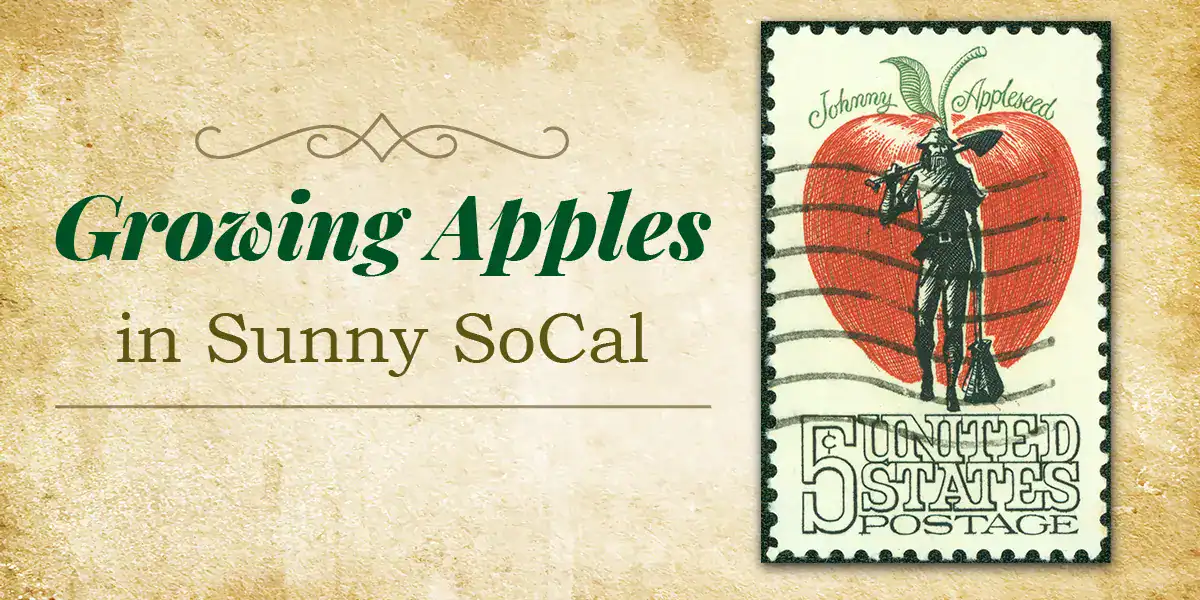Johnny Appleseed spread the gospel of the apple tree on the American frontier, traveling barefoot as far as Indiana and possibly Illinois.
He never made it to California, but the apple did, introduced by Spanish missionaries who also cultivated oranges, olives, grapes, and figs.
Today, California ranks as the fifth-largest apple-producing state in the USA. But apples are a cold-weather fruit, aren’t they?
Think again.
Oak Glen, the popular apple-farming destination in San Bernardino County, CA, proves that locally grown apples are an achievable dream, especially with a little elevation.
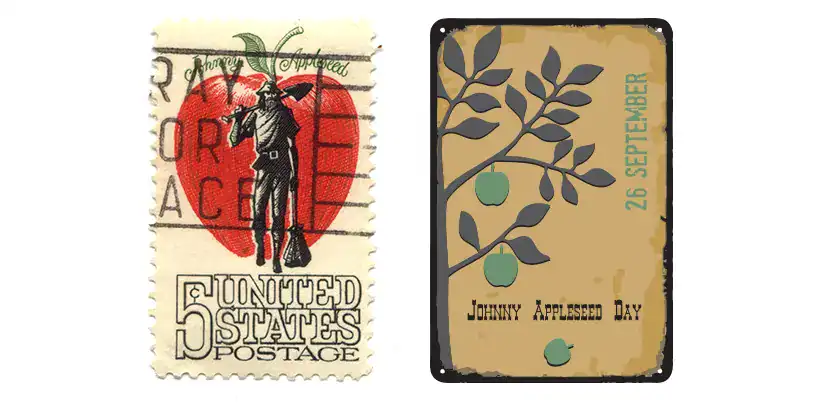
September 26 is Johnny Appleseed Day. Mark your calendars!
Low-Chill Apple Varieties
Apple trees must be exposed to a certain number of “chill hours” (below 45°F) to set fruit. However, some varieties need less chilling and are well adapted to Southern California’s warmer winters. Self-pollinating varieties include:
1. Anna
- Chill Hours: Approximately 200
- Harvest Time: Early summer
- Flavor: Crisp and mildly tart
- Notes: Partially self-fertile; yields improve with a pollination partner like ‘Dorsett Golden’
2. Dorsett Golden
- Chill Hours: 100–300
- Harvest Time: Early summer
- Flavor: Sweet and similar to ‘Golden Delicious’
- Notes: Self-pollinating and an excellent companion for ‘Anna’
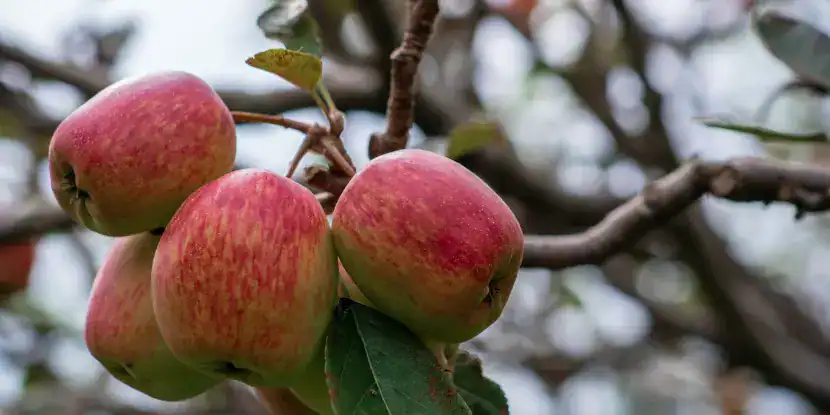
Anna apple yields improve with a pollination partner like ‘Dorsett Golden.’
3. Tropic Sweet
- Chill Hours: Around 250
- Harvest Time: Late fall to early winter
- Flavor: Very sweet with low acidity
- Notes: Self-pollinating; benefits from cross-pollination with ‘Anna’ or ‘Dorsett Golden’
4. Fuji
- Chill Hours: Approximately 400
- Harvest Time: Late summer to fall
- Flavor: Crisp, juicy, and sweet
- Notes: Self-fruitful and a good pollinator for other mid-season varieties
5. Granny Smith
- Chill Hours: 200–400
- Harvest Time: Late fall
- Flavor: Tart and crisp
- Notes: Self-fertile; produces better yields with cross-pollination
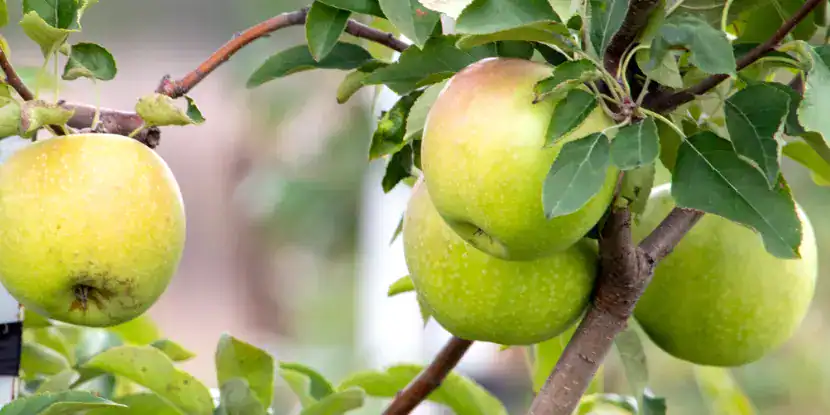
Don’t wait for tart Granny Smith apples to turn red on the tree. They never will!
6. Ein Shemer
- Chill Hours: Approximately 300
- Harvest Time: Midsummer to fall
- Flavor: Sweet and aromatic
- Notes: Self-fertile but benefits from cross-pollination; resistant to various diseases
Height & Spread
The height and spread of an apple tree depend on its rootstock and variety. Here’s a general overview:
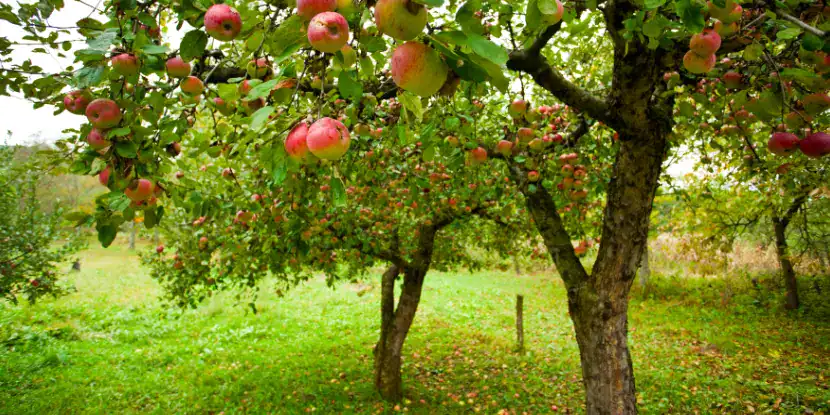
An apple orchard in full fruit.
Dwarf Apple Trees
- Height: 6–10 feet
- Spread: 3–8 feet
- Ideal for: Small gardens, patios, or container growing
- Notes: Dwarf trees are easier to maintain and harvest. They often require staking due to smaller root systems.
Semi-Dwarf Apple Trees
- Height: 12–20 feet
- Spread: 8–15 feet
- Ideal for: Medium-sized yards
- Notes: Offer a balance between manageable size and fruit yield. May need some structural support.
Standard Apple Trees
- Height: 20–30 feet
- Spread: 20–30 feet
- Ideal for: Large properties or traditional orchards
- Notes: Require more space and time to mature, but can produce abundant fruit.
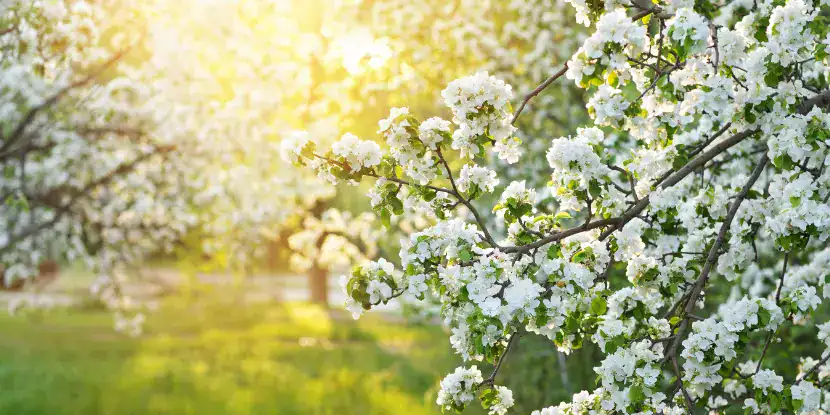
Apple trees explode with white blossoms in the springtime.
Optimal Growing Conditions
Light
- Apple trees require 6–8 hours of direct sunlight daily. Place them in a spot unshaded by buildings or other trees.
- Ample sunlight ensures healthy foliage and fruit development.
Temperature
- Apple trees prefer daytime temperatures between 60-85°F. Southern California’s temperate climate is ideal for most low-chill varieties.
- Mulch or provide shade cloth during extreme heat to protect young trees.
Soil
- Well-draining loamy soil rich in organic matter is best.
- Aim for a slightly acidic to neutral (6.0–7.0). Use a soil-testing kit to adjust if necessary.
- Mix compost into your soil before planting for extra nutrients.
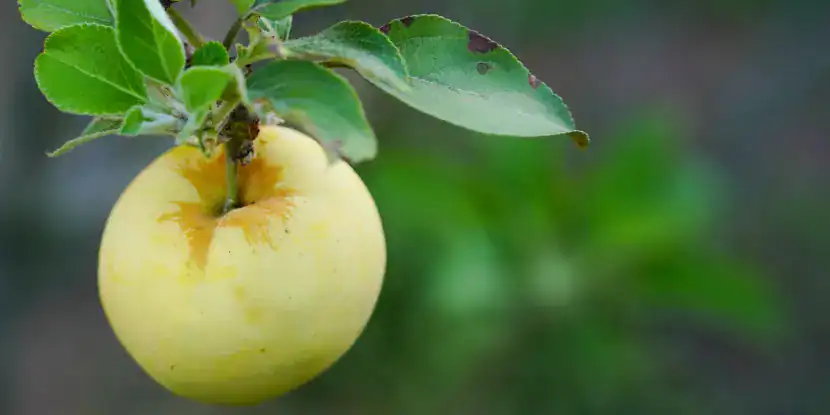
A Dorsett Golden apple ripening on the tree.
Propagating Apple Trees
Apple trees can be started from seeds, but this is a lengthy process with unpredictable results. For faster, more reliable growth, we recommend propagation through grafting or purchasing young trees from a nursery.
- Nursery Trees: Many Southern California nurseries sell low-chill grafted apple trees. Look for ones already grafted onto dwarf or semi-dwarf rootstock to save space in your garden.
- Grafting: For experienced gardeners, grafting lets you grow multiple apple varieties on a single tree.
Steps for Planting
Plant your apple trees in early spring or late fall and follow these steps:
- Find a sunny area with good airflow. Avoid frost pockets if you’re in higher elevations.
- Dig a hole twice as wide as the root ball and just as deep.
- Remove the tree from its container or burlap. Prune away any damaged roots.
- Place the tree in the hole, ensuring the graft union (where the tree meets the rootstock) sits 2 inches above ground.
- Refill the hole, firmly pressing down to remove air pockets.
- Give the tree a deep drink to help settle the roots.
- Add a 2–3 inch layer of mulch around the tree, keeping it at least 2 inches away from the trunk.
Apple Tree Care
Watering
- Newly Planted Trees: Water deeply once or twice a week.
- Established Trees: Water every 10–14 days or as needed, adjusting for weather conditions.
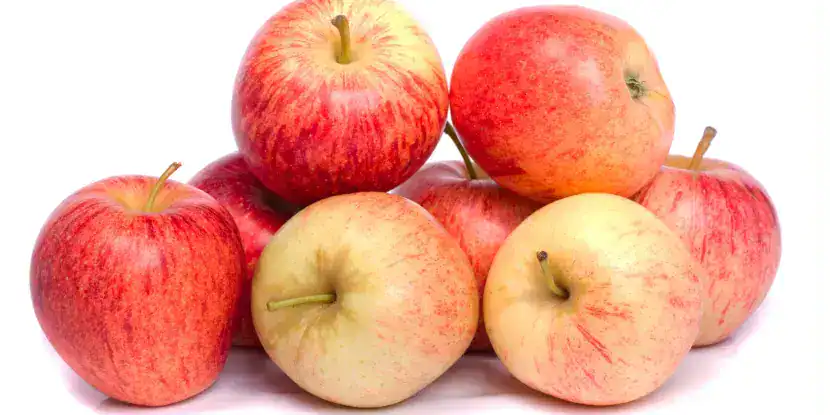
Gala apples offer a crisp, fine-grained texture and a sweet, mildly floral flavor
Fertilizer
- Apply a balanced fertilizer (10-10-10) during early spring and after the fruit sets.
- Avoid over-fertilizing, which leads to excessive leafy growth.
Pruning
- Prune in late winter or early spring when the tree is dormant.
- Remove any dead, damaged, or diseased branches.
- Thin out interior branches for better air circulation and sun exposure.
Pest & Disease Management
- Watch for common pests and diseases, including scale insects, aphids, and powdery mildew.
- Introduce beneficial insects like ladybugs, or use organic sprays like neem oil to control pests.
- Prune infected branches to prevent disease spread.
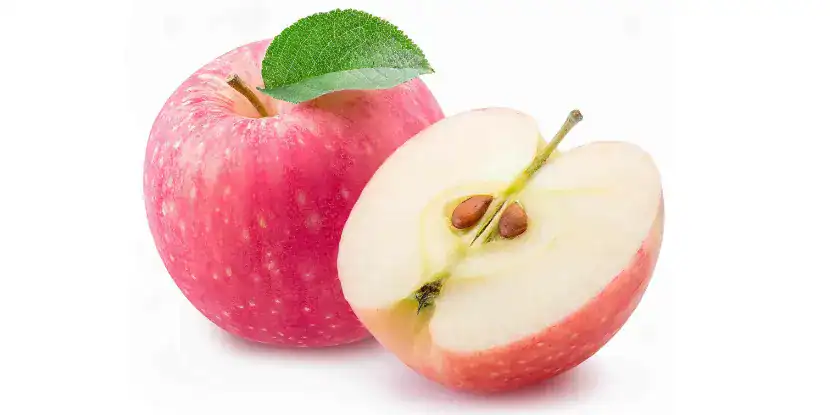
Fuji apples have crisp flesh and a honey-sweet flavor.
FAQs: Growing Apple Trees in Southern California
Q: Do apple trees need a lot of water?
Not necessarily. Water deeply but infrequently to encourage strong roots.
Q: Can I grow apples in containers?
Yes! Dwarf varieties like Anna and Dorset Golden do well in pots with proper soil and drainage.
Q: Do I need more than one tree for pollination?
Some varieties, like Ein Shemer, are self-pollinating, but planting two varieties is generally better for higher yields.
Q: How long before apple trees start producing fruit?
Grafted trees usually begin bearing fruit in 2–4 years.

Grandma prefers a Granny Smith. Go figure!
Q: What causes apple tree flowers to drop prematurely?
This can be due to uneven watering, lack of pollination, or nutrient deficiencies.
Q: Are apple trees prone to diseases in Southern California?
Proper pruning, spacing, and monitoring can prevent most issues.
Q: How do I protect my apples from birds and squirrels?
Use netting to cover the tree or hang reflective tape to deter pests.

